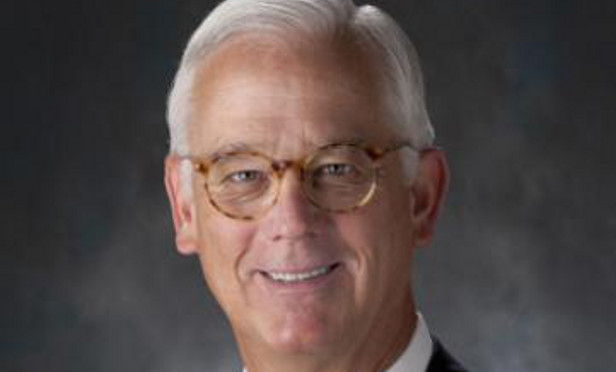 Mosis: “Conversations and work can be done as easily in the lobby or the gym as the conference room or in someone’s office.”
Mosis: “Conversations and work can be done as easily in the lobby or the gym as the conference room or in someone’s office.”
LOS ANGELES—The use of view glass and the size of floorplates are changing, but just as much drywall is being used in open-office floor plans as in traditional ones, USAA Real Estate Co.’s executive managing director Dirk Mosis tells GlobeSt.com. Mosis is planning committee chair for NAIOP’s O.CON conference here November 1-2. We spoke with him exclusively about the conference, what attendees will get out of it that they won’t find elsewhere and how traditional office product is evolving.
GlobeSt.com: What will attendees get out of this conference that they won’t find elsewhere?
Mosis: Experience and professionalism within the office-development arena are at a very high level—both the people who are presenting as well as those in the audience. If you want to meet people across North America who are doing remarkable office leasing and development, this is the place to go. Our focus will be on technology in the workplace and will cover some topics I haven’t seen at previous NAIOP conferences. There will be discussion about the garages of the future and the human resources element in attracting and retaining employees; where does office space play in the HR decision-making world? Looking at some buildings that 10 years ago made a lot of sense and seeing how they have been changed to attract/retain more of a technology-focused group of young talent is pretty exciting. It’s a great way to see the latest going on in designing and developing—these are case studies happening in real time, which I particularly like.
GlobeSt.com: How do you see traditional office product evolving in terms of changes in technology, demand and demographics?
Mosis: Certain materials are changing in the envelope of the building. For example, view glass is old technology, but it’s just now getting into a reasonable price point with building. It cuts down on heat gain and cuts the cost of electricity; A/C units don’t have to work as hard, and people control individual units from their office. A lot of the technology of the building itself is pretty straightforward: is it steel, brick, concrete and glass. Floorplates getting bigger—they’ve gone from 20,000 square feet to 30,000 square feet in most buildings now. There are more people on a floor, and sometimes the codes aren’t quite up to speed, stairways need to be larger or one more stall is needed in each restroom.
There are more social and gathering areas, and this could be in the main lobby—you see more of that since people are on their mobile devices—so that conversations and work are actually being done in the lobby or the gym and not necessarily in a conference room or in someone’s office. Millennials move around more.
I’d like to say we’re spending less on drywall, but we’re really not, according to studies. Space may appear to be a little more open, but when you’re putting in more quiet rooms and conference rooms, you’re putting in the same amount of drywall and glass as before. Our parent company, USAA, serves everyone from call centers to real technology-development guys, and they are all about, “Where can I attract and retain people inside the building, but also outside? Where are the amenities?” There are requests from call centers for seven or eight per 1,000 parking—huge parking lots. They’re trying to get those closer to restaurants or offer cafeterias to provide good food quicker, fresher, to so people stay on site and produce more. It’s more focused on the individual, the employee.
GlobeSt.com: What else should our readers know about O.CON?
Mosis: O.CON is a great place to network with experienced people and connect with new names in the game – there are a lot of new people to the industry. It’s a great place to gain better understanding of the innovations touching our industry now and in the future and how we can adapt. Our L.A. chapter has set up some project tours in the local market that are pretty cool—tours of rehab, mixed-use, new construction—it’s a real draw for people to come out there.

















 Copyright © 2024 ALM Global, LLC. All Rights Reserved.
Copyright © 2024 ALM Global, LLC. All Rights Reserved.